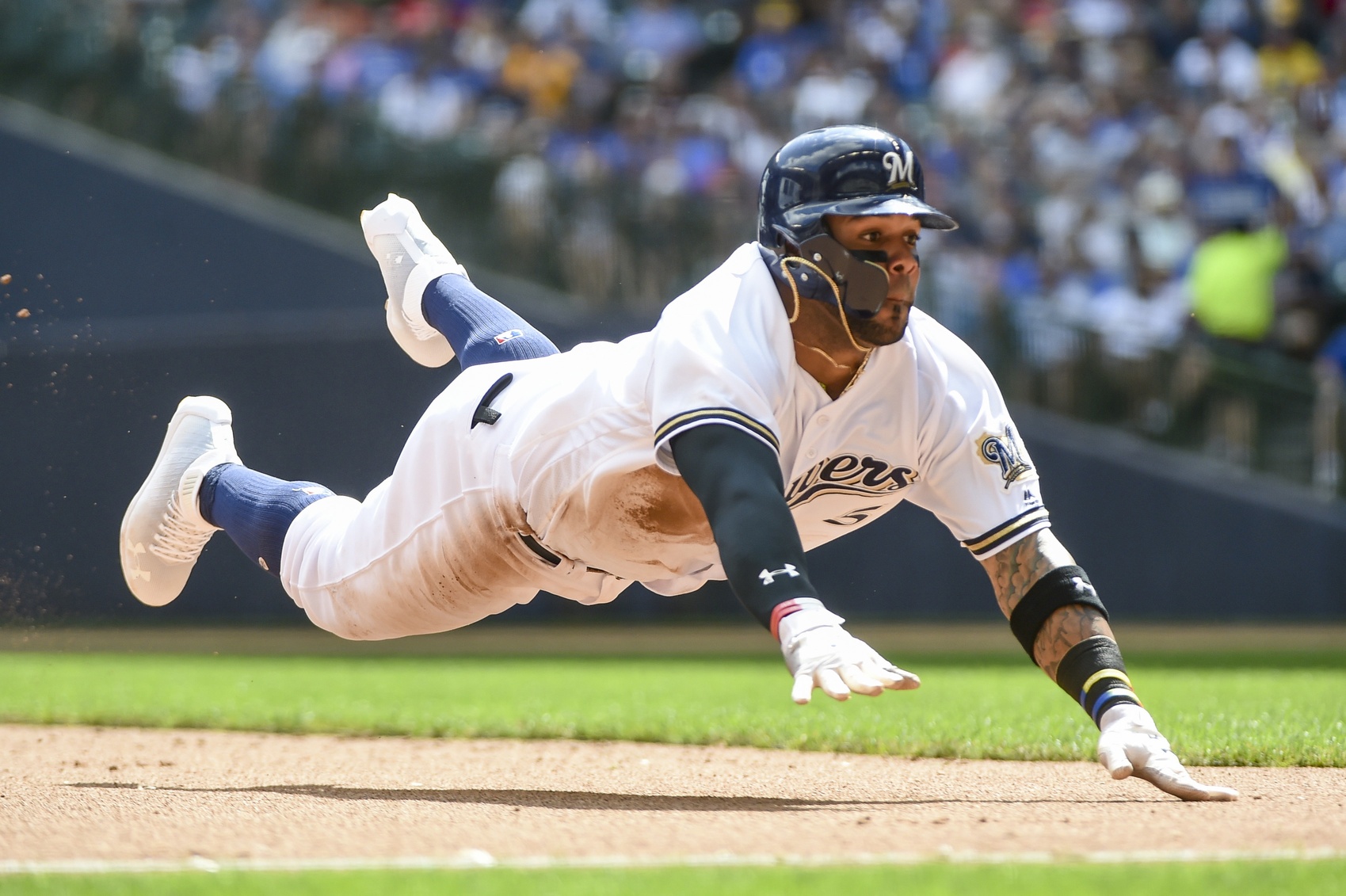It should come as no surprise for me to say that the Brewers are not favorites to win their own division. PECOTA’s projections have been released today, and the Brewers are projected to be an 83-win team, or six wins worse than the Cubs. Their 83-win projection puts them in the same range as the Cardinals (84), Giants (85), and Diamondbacks (86), all of whom should be competing with the Brewers for the NL’s two wild card slots.
These projections will not be perfectly accurate come season’s end, but they provide a good starting point for analyzing the Brewers’ upcoming season. The Brewers will have a decent shot at making the playoffs, but whether that actually happens will (obviously) be determined by which players over- or under-perform their projections and by how much. And as some players are more risky than others, who gets significant playing time can play a big role in whether a team significantly overshoots their projection.
PECOTA tells an interesting story for the Brewers, as the six-win gap to the Cubs seems as if it should be significant. Because of the stratification of talent across the big leagues, however, that gap is by far the smallest between the top two teams in any division (the nine-win gap between the Yankees and Red Sox is next). The Brewers and Cardinals are the teams most likely to “steal” a division title and earn their playoff spot without having to go through the wild card round, so they should see greater incentive than other potential wild card teams to close the gap between themselves and the Cubs.
Just because a division title is plausible does not mean the Brewers should mortgage the future to reach for that goal, though. They are still early in their competitive cycle, so trading young talent for short-term upgrades does not make sense. What could make sense, though, is spending money on shorter-term free agent deals that will improve the team now but come off the books before any long-term extensions are required.
But another way to impact playoff odds is through deciding what types of players to give playing time to. The goal is always to put the best players on the field, but players have different risk profiles. There is not a ton of difference between the projections for Jonathan Villar (.244 TAv) and Eric Sogard (.238 TAv), for example, but Villar is more likely to give you a three-win season than is Sogard. Sogard, however, is probably less likely to be a negative.
Because Villar is a higher-variance option, he gives the Brewers a better chance at exceeding their projections than would someone like Sogard or Hernan Perez. Whether the Brewers want this, however, is an open question. They are closer to first place than any other second-place team, so one possible path is to play for as low-variance a season as possible and hope the Cubs disappoint again. Another option would be to take advantage of how close they are and be more aggressive.
This impacts Villar because it dictates how long his leash should be. If he starts the season as the everyday second baseman but struggles out of the gates, the Brewers could be tempted to replace him. If they are willing to take on higher risk, though, they should continue to give him playing time because his upside is such (at least as compared to Sogard or Hernan Perez) that he could help them close the gap on the Cubs.
If the Brewers do choose this path, and Villar does not turn it around but is instead a replacement-level player and they miss the playoffs by a game, that does not necessarily mean that the team made a mistake. Even with perfect information, which even major league baseball teams do not have, it is impossible to predict how any individual player will fare in a particular season. When teams are deciding how to allocate playing time, risk profile should be one of the factors taken into consideration.
Because big-league teams have better information than we do as fans, a reasonable temptation is to ask them to be perfect and accurately predict what will happen with each player in the upcoming season. They cannot do that, though. Their models are probably more accurate than are the public ones, at least in part because they have access to more information and so their inputs are better. But they still cannot perfectly predict player performance, as the continuing existence of free agent bargains indicates, so instead they are playing probabilities.
Villar is a good illustration of this type of player. The Brewers cannot know exactly what they will get from him, but his 2016 performance shows that he can be a good player. Whether that player will show up in 2018 is an open question, but the Brewers would be justified in letting him play to see whether he can be productive and push the team towards a potential division title. Because the Cubs are a more talented team, the Brewers have to take some risks if they want to try and catch them. Giving Villar an extended run at second base would qualify.
Photo Credit: Benny Sieu, USAToday Sports Images
